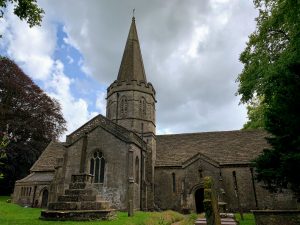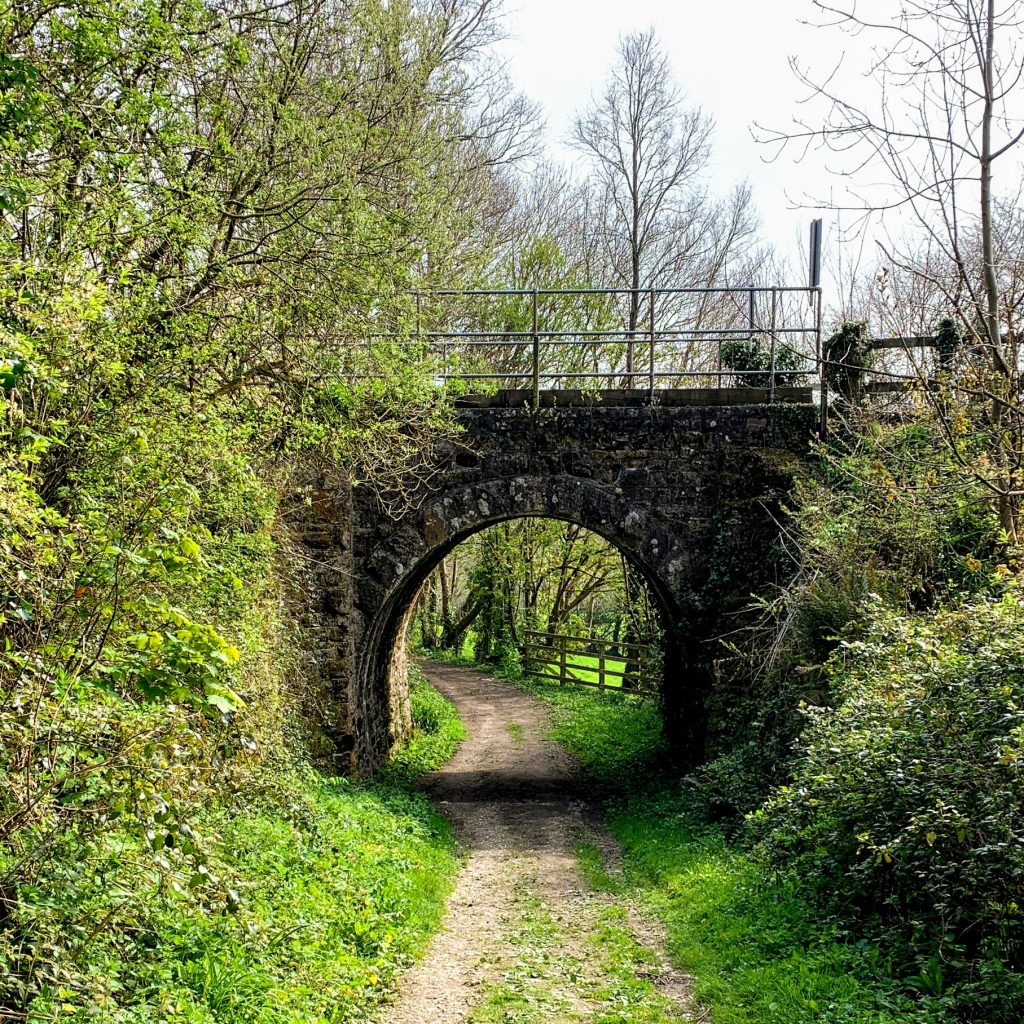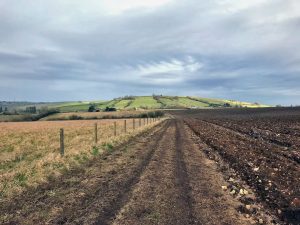I’ve let my blogging slip, so I have a few walks to catch up on. Rather than leave them undocumented, I’m going to do a few fairly short posts to get up to date.
This walk was another pleasant stretch of the Mendip Way, starting and ending in Shepton Mallet. Setting off across Barren Down, I soon emerged onto the main road via some steps that I have long wondered where they led. Another mystery solved!
Crossing over the road, the Mendip Way leads behind Kilver Court and into sight of the wonderful Charlton Viaduct. It used to carry the Somerset & Dorset Railway over the River Sheppey. The curve makes it really beautiful in my eyes. Still clearly serving a practical use as a car park, it is a shame walking over it is not allowed.
After a climb up Ingsdons Hill, the path drops down into Chelynch where I called into the Poachers Pocket for a pint and pickled egg. The welcome was friendly and the beer was good, and on this occasion I could take advantage of the beer garden. Browsing the internet I discovered that permission had been turned down a few years previously for a sizable solar farm on Ingsdons Hill. I mention this because I find this a difficult subject to resolve my thinking on. Ingsdons Hill is beautiful as it is, but without space being given over to renewables, this isn’t going to matter before long. The same can be said for housing of course – people need homes. But they also need life to be worth living, and for many of us that means having access to unspoilt countryside. I’m glad I don’t have to make these decisions.
I enjoyed this valley on the way between Chelynch and Doulting. It doesn’t look natural to me, but there is no hint on the map that it is anything other.
Doulting itself is full of amazing old buildings. The Church of St Aldhem is named for the nephew of King Ine of Wessex, who died in the village in 709. It has a very grand spire, and apparently there is a Green Man in the vaulting of the porch – a definite reason to return. There is a natural spring here, called St. Aldhem’s Well, which is the source of the aforementioned River Sheppey.
From Doulting I took a south-westerly route across Doulting Sheep Sleight and up to the top of Whitstone Hill. I have looked longingly at this hill almost every morning as I drive past on my way to work. It doesn’t disappoint. It is not a spectacular hill in and of itself, but the view from the top is everything you could ask for in this part of Somerset. I sat and ate some lunch while watching a helicopter land and take off again from the direction of Worthy Farm. I hope whoever was in it was not too busy to notice the spectacular vista laid out before them.
Distance: 7.7 miles






























